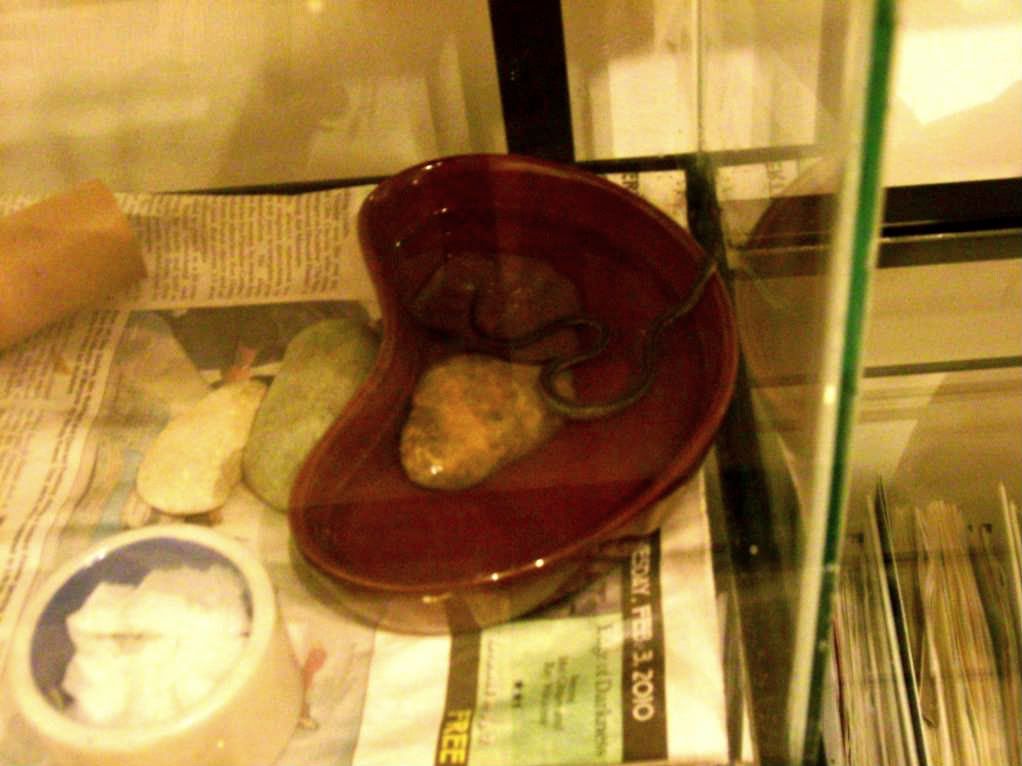A couple weeks ago, a plains garter snake (Thamnophis radix) presented at the clinic after someone found the young snake in their basement. Why would a snake be active in the middle of winter when it should be hibernating? Actually, reptiles do not go through a true hibernation like mammals. Instead, they undergo brumation. True hibernation results in an animal going dormant in the fall and remaining so until spring. During brumation, the cold environmental temperature significantly lowers a reptile's body temperature, causing it to be less active and have a lower metabolism, but not to be truly asleep. This allows a brumanating reptile to "wake up" for periods of time. As a result, it is not uncommon for snakes to end up in a basement during the winter if they are trying to move deeper in the earth to escape dips in temperature. Box turtles have also been shown to move higher and lower in the soil in response to changes in winter temperatures, and there also was a young box turtle that came into the clinic recently.
For a reptile found in the winter, it can either be induced into an artificial brumation, or it can be kept awake, warm, and eating until it can be released in spring. This garter snake was also suffering from "hibernation sores," the result of opportunistic infections that occur from a reptile's immune system not functioning as well due to its lowered metabolism. As a result, it was decided to keep the snake awake to give it the best chance to recover. Now, after shedding its skin, almost all the sores are healed. If you find a reptile in the winter, bring it to the Wildlife Medical Clinic or a local wildlife rehabber to give it the best chance for survival.
The Garter Snake Enjoying a Soak

The Young Box Turtle

Saturday, February 13, 2010
Why is there a snake in my basement in winter?
Subscribe to:
Post Comments (Atom)





No comments:
Post a Comment